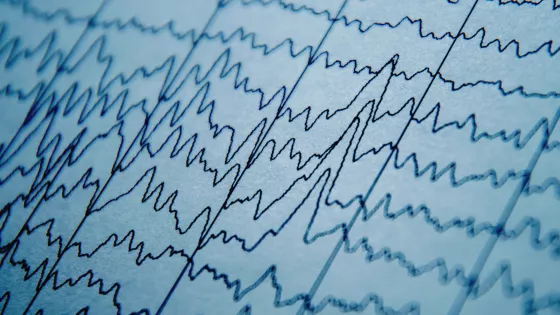School staff should be aware of the different epilepsy seizure types and triggers, so they can identify them, make adjustments and plan accordingly.
Seizure types
With epilepsy, there are two main types of seizure:
Generalised onset seizures, which occur when the whole brain is affected by abnormal electrical activity. The young person becomes unconscious, though sometimes only briefly. Find out more about generalised onset seizures by clicking here.
Focal onset seizures, which occur when one area of the brain is affected by abnormal electrical activity. The symptoms and level of consciousness depend on the area of the brain involved. Find out more about focal onset seizures by clicking here.
Seizures can be difficult to spot, with absence seizures – a type of generalised onset seizure – often mistaken for daydreaming, and focal onset seizures taken for difficult or unusual behaviour.
Other seizures may be put down to clumsiness or falls.
Where appropriate, staff should be trained to know exactly what to do if a young person has a seizure click here to read more.
See also Keeping accurate seizure records in schools and Individual Healthcare Plans.
You can also find out more here about managing seizures by clicking here.
Seizure triggers
Commonly reported seizure triggers include:
- Overtiredness
- Dehydration
- Fluctuating blood glucose levels
- Illness or fever
- Stress and anxiety
- Overexcitement
- Changes in medication or missed doses
- Hormonal changes during puberty for both boys and girls, including menstruation
- Photosensitivity (flashing or flickering lights), which affects about 3% of young people with epilepsy
- Alcohol or recreational drugs
Find out more about seizure triggers by clicking here.
You should take these possible seizure triggers into account when planning activities. If a young person with epilepsy is more likely to have seizures when they’re tired, you could arrange for them to start school later on some days, particularly if they’ve had seizures overnight. Regular sleep patterns are important, so bear this in mind when planning residential trips. Encouraging young people to live as normal life as possible, eat healthy snacks during break times will keep blood sugar levels balanced. Also, as stress is a significant trigger for seizures, teaching stress management and relaxation skills could be beneficial.
Risk assessment and safety precautions
It’s important to risk-assess activities, put in place safety precautions and make reasonable adjustments to ensure all children and young people in schools have full access to the curriculum.
Find out more about supporting pupils with medical conditions in the different UK nations here, and UK education laws and guidance relating to medical conditions here.



